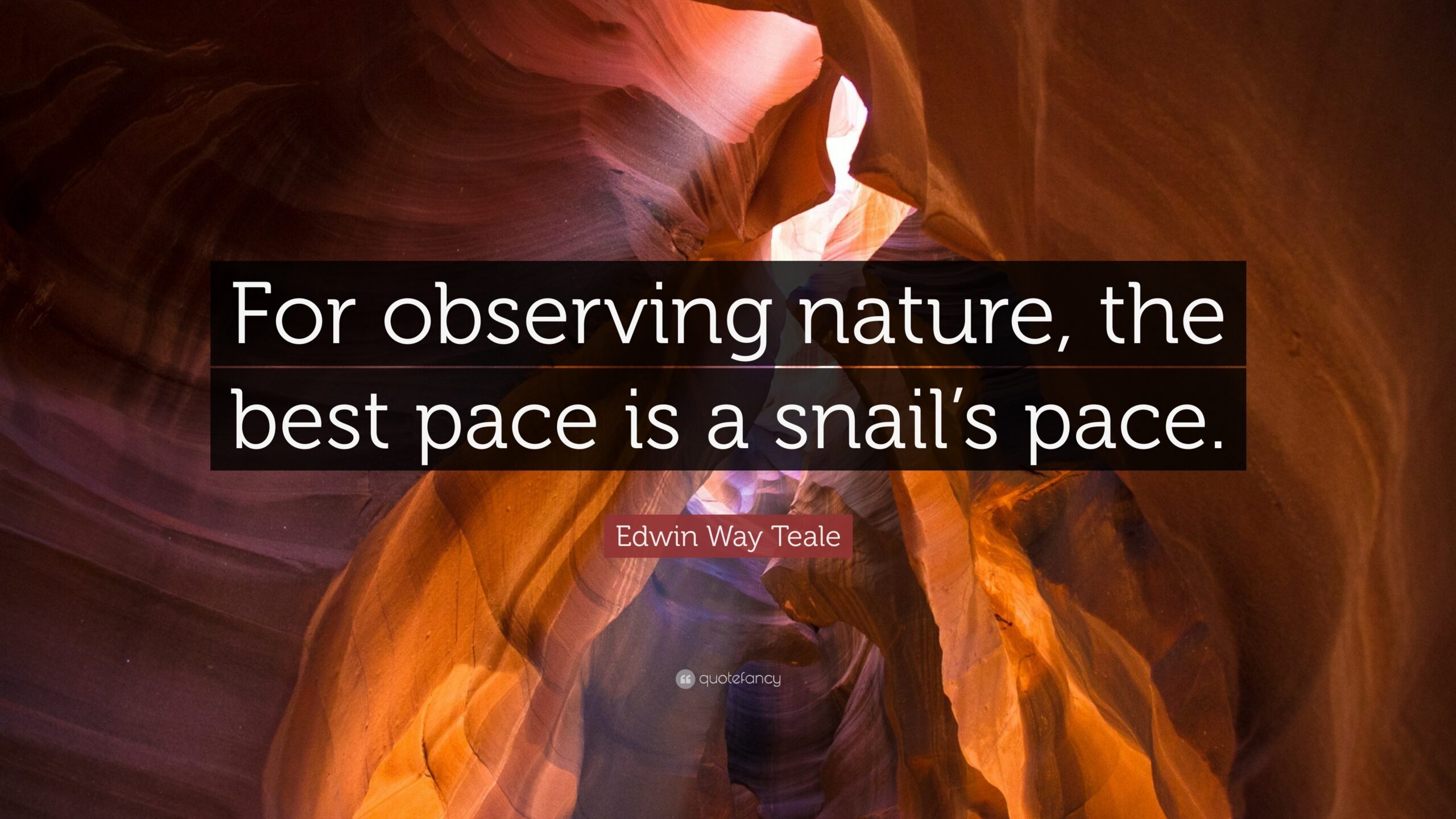In an age where instant gratification reigns supreme, the idea of patience, especially in relation to observing nature, often seems antiquated. Yet, within the verdant embrace of our natural surroundings, time operates on a different frequency, inviting an experience that is immensely rewarding for those willing to invest the requisite attention and stillness. The famous quote by Edwin Way Teale—“For observing nature, the best pace is a snail”—beautifully encapsulates this sentiment, implying that a deliberate and unhurried approach can profoundly deepen our connection with the natural world. The significance of such a philosophy stretches far beyond mere appreciation; it beckons us to reconsider our relationship with our environment, urging us to slow down and engage with the world around us on a more intimate level.
To fully grasp the implications of this quote, it is essential to reflect on the importance of patient observation. In a world buzzing with distractions and constant stimulation, we often overlook the subtleties that nature has to offer. A keen observer not only sees the surface of a lovely flower or a fluttering butterfly but also ponders the intricate ecosystems that sustain these organisms. What is the lifecycle of the butterfly? How does the flower attract its pollinators? These questions can only be discerned through a contemplative approach, one that Teale champions.
Moreover, patient observation draws us into a deeper understanding of the natural processes that dictate the rhythm of life. The seasons change as if choreographed by an unseen hand, revealing the remarkable cycle of birth, growth, decay, and renewal. Each phase offers distinct lessons about resilience and transformation. When one approaches nature with the deliberate pace of a snail, the transitions between these phases become not just observable phenomena but rich narratives waiting to be unearthed. The dawdler may witness the seemingly mundane—tree leaves fluttering down in autumn or initial glimmers of spring blossoms—elevating these occurrences to experiences that resonate on a fundamental level.
In cultivating the art of patient observation, we also foster mindfulness. One benefits immeasurably from this practice—not just in the way we perceive flora and fauna but also in everyday life. The act of observing nature without immediate judgment or expectation can mirror introspective growth. By embracing stillness, we begin to understand the value of patience in our personal journeys. Each moment spent in the great outdoors can serve as an antidote to modern life’s frenetic pace, allowing us to quiet our minds and glean wisdom from our surroundings.
The nuances of nature reveal themselves only to those who are willing to invest time and mental space. For instance, consider a simple walk in the woods. To the hurried observer, it may merely be an assortment of trees, dirt paths, and wildlife. However, take a moment to pause, breathe, and observe. The swaying branches whisper secrets of resilience. The woodland floor teems with life, each organism playing its part in the greater tapestry of existence. Such discoveries, all waiting just beneath the surface, become jewels of knowledge that are only unveiled through patient contemplation.
However, patient observation is not merely a passive activity; it is dynamic and engaging. Each distinct organism interacts in complex ways, creating a vibrant, interwoven tapestry of life. By becoming attuned to these intricate relationships, we not only gain a better appreciation for nature’s balance but also acquire a foundational understanding of ecosystems. Such insights can inform conservation efforts, emphasizing the critical roles specific species play in maintaining ecological integrity. Slow, deliberate observation empowers us to act as stewards of the environment when we understand the consequences of our actions on interconnected systems.
Furthermore, the art of observing nature encourages creativity. Artists, writers, and thinkers alike have drawn inspiration from the unfurling leaves, the play of light through the trees, or the critical role of the smallest creatures. Pablo Neruda, the celebrated poet, once remarked, “To feel the love of people whom we love is a fire that feeds our life.” This fire, too, can be kindled by our experience of nature, fanned by slow, attentive observation. When we immerse ourselves completely in a single moment—the scent of damp earth, the patterns of animal tread, the texture of bark—our creative faculties awaken, revealing a wealth of ideas and innovations.
As we take to heart Teale’s proverbial snail’s pace, we acknowledge the inherent wisdom found within nature’s intricate details. Allowing ourselves the luxury to observe patiently opens the floodgates to discovery. This profound immersion leads not only to a richer understanding of the natural world but also enhances our emotional and psychological well-being. Through mindful engagement with our surroundings, we cultivate a sense of peace and belonging, relegating the noise of modern life to the periphery.
In conclusion, embracing the philosophy of “For observing nature, the best pace is a snail” serves as a poignant reminder to slow down and delve into the depths of our surroundings. Through the wisdom of patient observation, we can unlock the mysteries of nature while enriching our own lives. Each leisurely stroll through a park or hike along a trail presents an opportunity for exploration, not just of the external world but also of our inner landscapes. In cultivating patience, we engage in a dialog with nature, allowing it to guide us towards greater understanding, creativity, and tranquility.









Leave a Comment